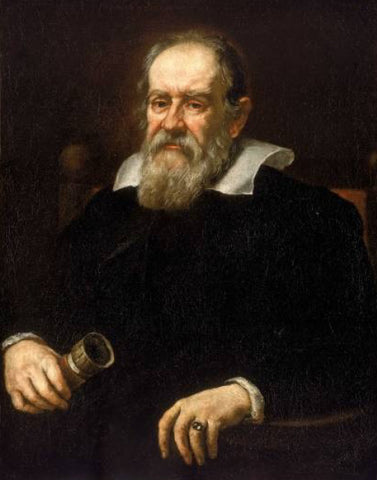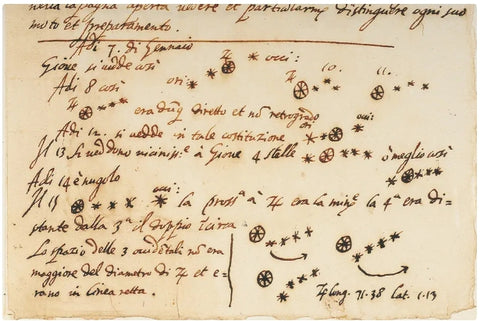University of Michigan Discovers Galileo Manuscript is a Forgery September 02 2022
The University of Michigan was devastated to find out that one of its most famous artifacts turned out to be a forgery. In their possession since 1938, the manuscript was supposed to have been authenticated many years before. The library’s curators were alerted after historian Nick Wilding reported his concerns about the artifact being a fake.

After an internal investigation, they announced to the school and the public that Galileo himself did not actually write the document. The library hopes that the manuscript can serve to educate the public and help identify other forgeries in the future.
[IMAGE] Galileo Galilei, oil painting from 1636 by Justus Sustermans (1597-1681)
The University of Michigan Library issued an official comunication on its website about this topic sharing the findings on this matter.
WHY THIS PARTICULAR LETTER SO IMPORTANT
Galileo is one of the most significant scientists in history, who was incredibly influential as one of the first astronomers. He is credited with making many contributions to the sciences that changed how humans looked at the world.
One such discovery was that of Jupiter's moons. This discovery was the first verifiable proof that Earth is not, in fact, the center of the Universe, but instead, the Sun is. The university's Galileo manuscript was supposed to be a draft of the letter he sent to the Doge of Venice about his observations of Jupiter's moons through a telescope he had built himself.
THE HISTORY OF THE LETTER
The Galileo manuscript in question was broken into two parts. The top half was the note, and the bottom half was thought to be his original observation notes. They were dated the year 1610. While there is no record of the manuscript in Italian archives, the known origins are as follows:
- Businessman Tracy McGregor bequeathed the letter to the University of Michigan in 1938
- McGregor had bought it at auction from collector Roderick Terry
- The auction catalog reported that the Archbishop of Pisa had authenticated the document

Galileo Galilei autograph annotations about his discovery of the 4 moons of
Jupiter - Now discovered to be a fake manuscript
WHY WAS A FORGERY EXPECTED
The man who alerted the university to the forgery was Nick Wilding, who made a name for himself as an expert in detecting Galileo forgeries after discovering other fakes, such as a copy of Sidereus Nuncius. Initially, the monograms in the paper's watermark tipped him off. However, he also noticed weird word choices, irregular letter forms, and the same ink for the top and bottom portions, which were supposedly written months apart.
After tracing the origin of the manuscript, it was discovered that it had been authenticated by the Archbishop of Pisa, Cardinal Pietro Maffi. As it turns out, other counterfeit documents in Maffi's collection were used as comparisons to verify the artifact.
TOBIA NICOTRA - “The Cleverest Forger on Record”
The two other documents in Maffi's collection had been forged by a man named Tobia Nicotra, a notorious counterfeiter with an interesting story. He likely sold between 500 and 600 forgeries throughout the 1920s and 30s, attributed to many historical figures such as Leonardo da Vinci, Mozart, and George Washington.
Some reports claim he began his work as a forger to rent apartments in Milan for his seven mistresses. Police eventually arrested Nicotra for selling fake historical documents. He was sentenced to two years in jail. While he was likely responsible for hundreds of forgeries, only a handful have been identified.
Sources:
University of Michigan Library
MOZART, PERGOLESI, HANDEL?: A STUDY OF THREE FORGERIES
SEE ALSO:
- How to Know When an Autograph is Authentic (Blog)
Interested in authentic autographs?


